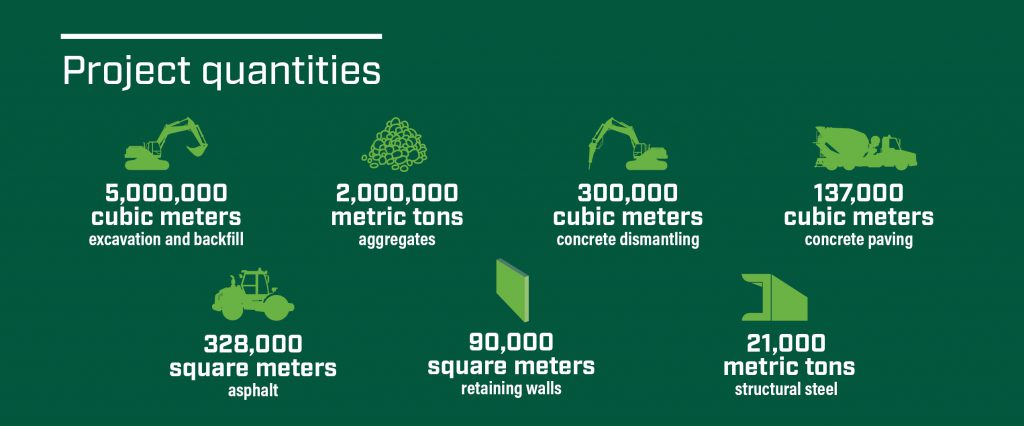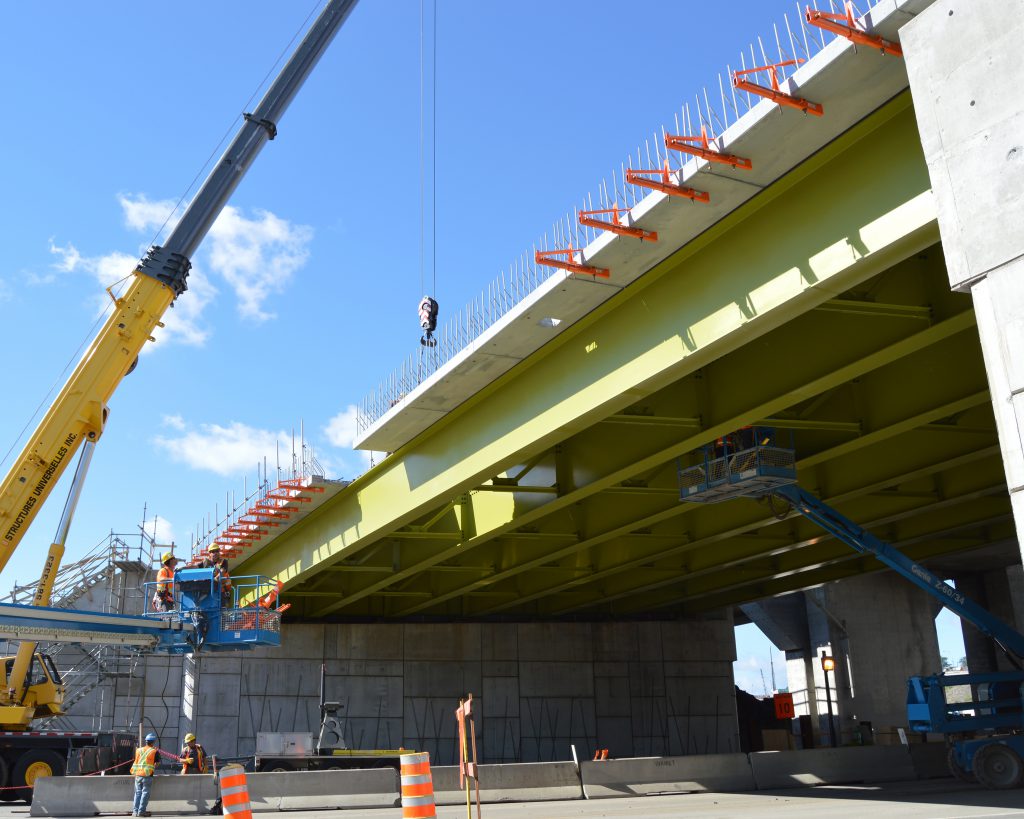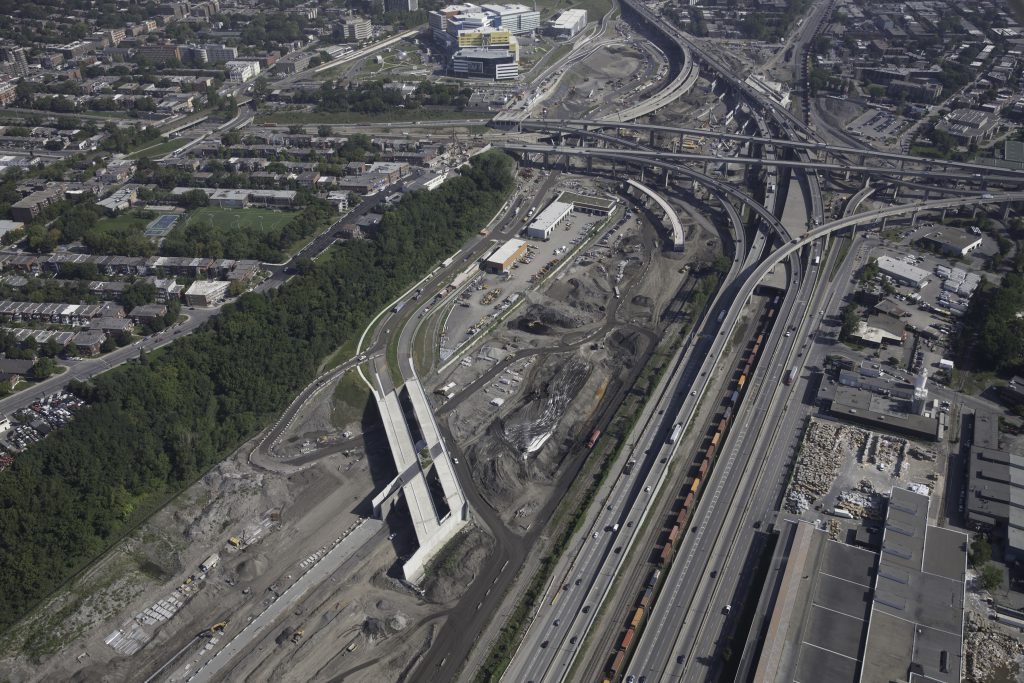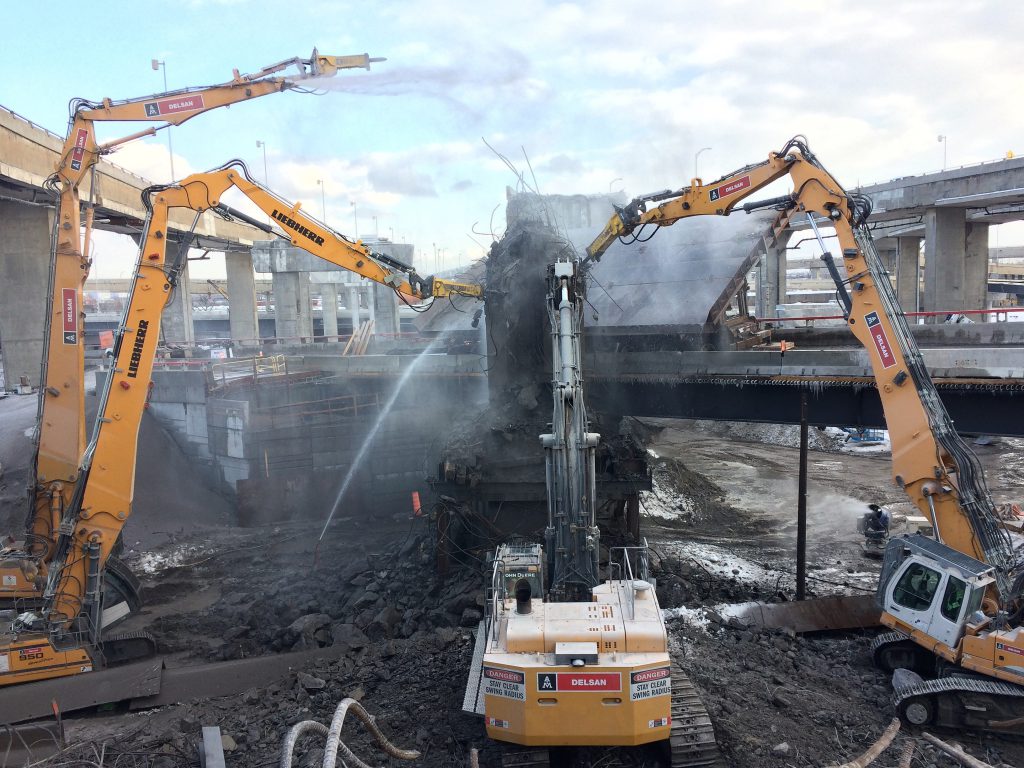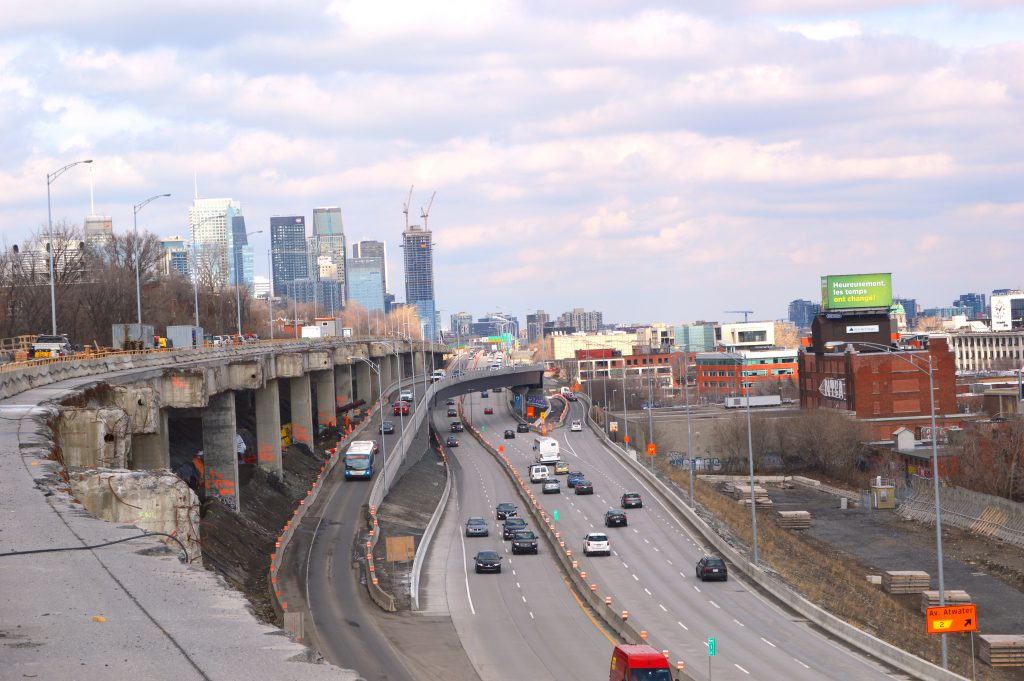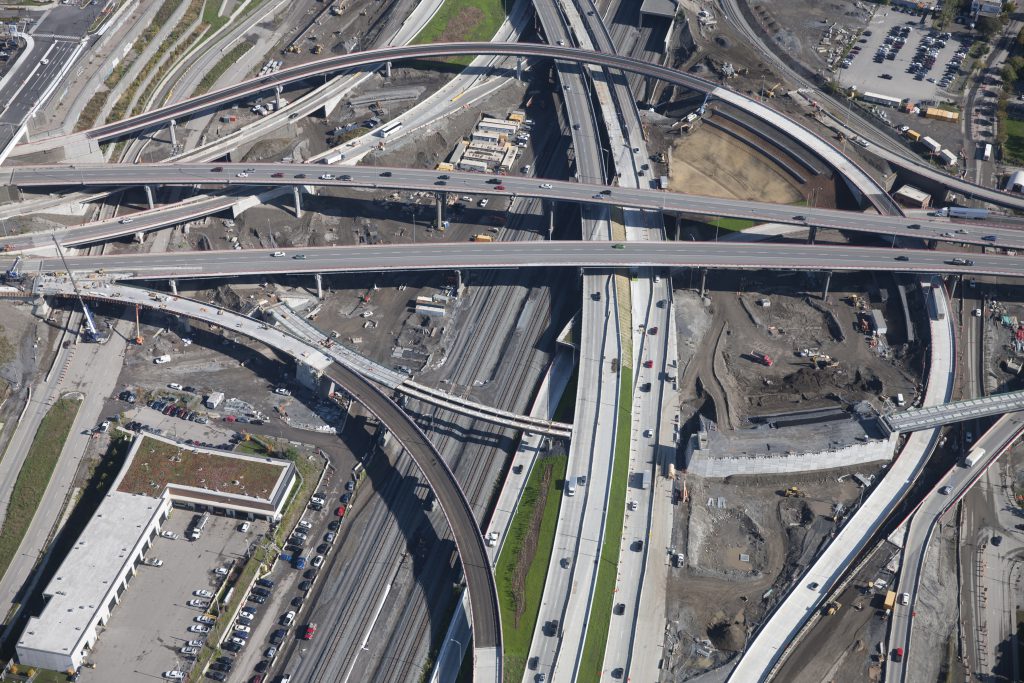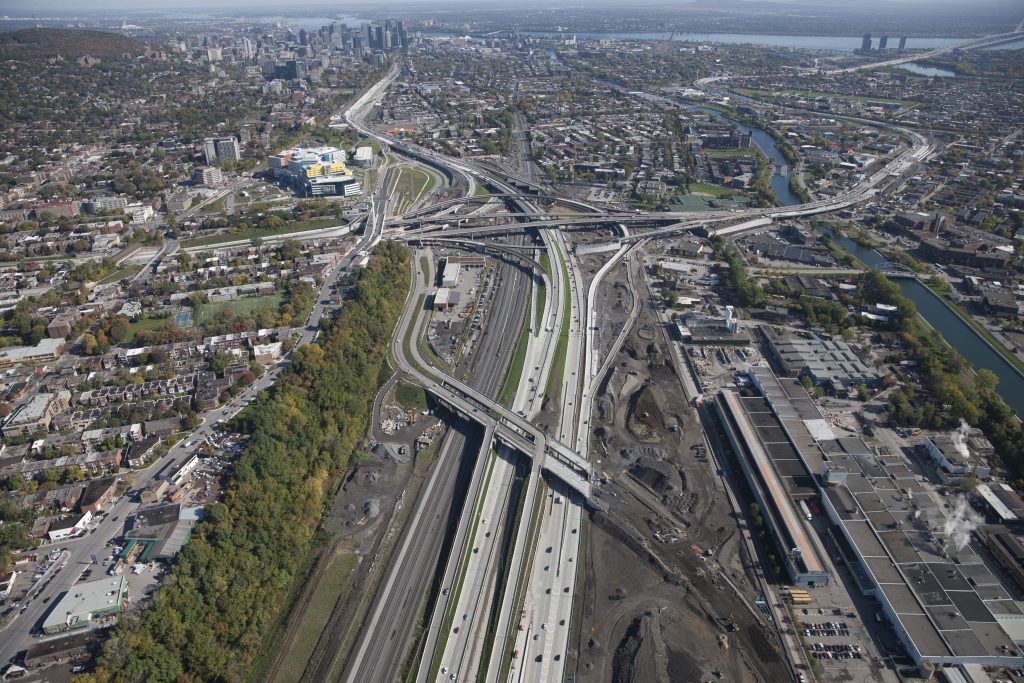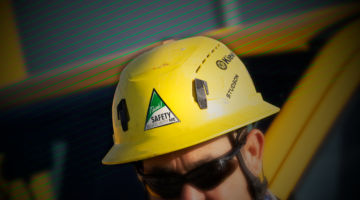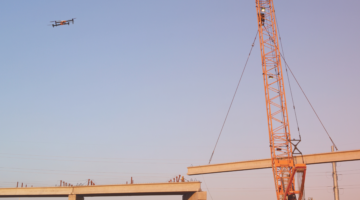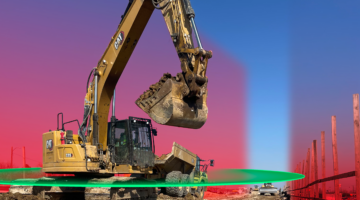To read this article in French, click here.
For the past six years, crews have been working to improve the durability and safety of the Turcot Interchange and to create better links between neighborhoods in the southwest part of downtown Montréal, Quebec.
Scheduled for completion by the end of 2020, the project is considered one of the largest road projects in Quebec, as well as the most complex road infrastructure project currently underway in North America in terms of work sequence.
The Turcot Interchange was originally designed and built in the 1960s as part of Montréal’s major infrastructure plan leading up to World’s Fair Expo ’67. When it opened, Turcot was Canada’s highest elevated interchange, designed to allow ships and trains to pass under the freeway.
In the early 2000s, the old interchange began to show signs of deterioration, leading a few years later to a decision by the ministère des Transports du Québec (MTQ) to construct a new interchange. In 2015, the KPH Turcot partnership, consisting of Kiewit, Parsons and CRH, won the design-build contract and took on the challenge of completely rebuilding the aging infrastructure.
Prior to the design-build contract, the client had awarded 20 contracts for associated work on the Turcot project site, including stand-alone bridges that had to be integrated into the new infrastructures.
Kiewit, as lead member of the KPH Turcot partnership, was responsible for all construction and project management systems. Parsons was responsible for managing the design of the project and worked as an integrated team with WSP, the main designer, to carry out parts of the design, including the Lachine Canal bridge. WSP was responsible for design, environmental compliance, the integration of landscaping and urban design. They brought expertise to the design of pavement, drainage, bridge decks, traffic management, road lighting, electrical and intelligent transport systems. CRH had responsibility for pavement and road accessories construction, as well as the supply of construction materials.
Each day over 300,000 vehicles travel through Montréal’s Turcot Interchange. It is one of the biggest interchanges in Canada and a hub for traffic that connects three provincial highways as well as the Champlain bridge, which provides important access to the island of Montréal. It is an essential link between Montréal’s Pierre-Elliott Trudeau International Airport and the city’s downtown.
“Working on such a large site in a sensitive urban environment was a truly rewarding experience, and we all learned a lot from it,” said Cloé Doucet, assistant to the roadway construction manager.
The construction site extends over nearly 8 kilometers from east to west, and 2 kilometers from north to south. The project included the reconstruction of the Turcot Interchange as well as three other interchanges: Angrignon, De La Vérendrye and Montréal West. It also included the relocation of Highway 20 lanes and Canadian National (CN) railway tracks.
The new infrastructures are mainly built on fill and are considerably lower than the old elevated structures. This lowering is intended to improve lifecycle costs and durability.
“The project was also designed by the MTQ for the urban environment in which it is integrated,” said Project Manager Olivier Beaulieu. Along with wider shoulders for emergency vehicles, some key features in the design include additional green space, bicycle paths and dedicated bus lanes. Permanent noise reduction walls were installed along the highway to improve noise levels in the surrounding neighborhoods.
“The project is an important part of the community’s identity. A lot of thought and energy went into developing the architectural concepts that would match the expectations of Montrealers,” said Beaulieu.
The retaining walls were textured and colored. The steel girders and guardrails were painted. MTQ wanted to create a project that blends into the urban décor, so each neighborhood has a color that reflects its flavor.
Signature structures on the project include the Lachine Canal cable-stay bridge. It was designed to resemble a ship hull, a nod to the Canal’s industrial past. On top of these architectural features, the newly created green spaces will include 9,000 trees and 61,000 bushes.
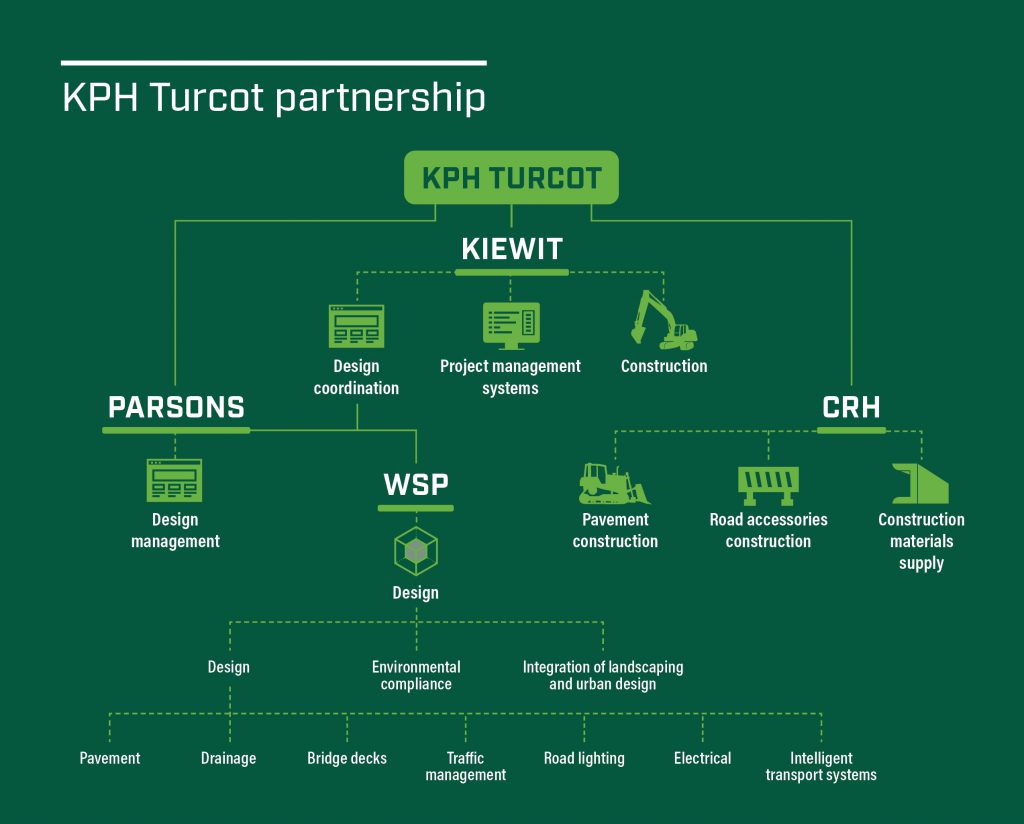
Biggest challenge: maintain mobility
“One of the biggest challenges of the project was to maintain mobility for the 300,000 vehicles and 50 trains that pass through the Turcot interchange daily,” said Construction Manager Sébastien Djan-Chekar. This major constraint was at the heart of the planning and management of the project. Decommissioning the old interchange involved major work in a limited space with a specific completion schedule, all of which had to protect the tangle of existing works and keep traffic moving.
“MTQ’s main objective was to reduce nuisances for users and residents and, above all, traffic-related problems,” said Doucet. “To achieve this, the duration of the work was optimized to guarantee the efficiency and quality of the work, while minimizing lane closures and disruptions to neighborhood life.”
Construction activities were planned in a way that prioritized the maintenance of mobility. In order to establish the sequence of work, the team used 3D-imaging models of the existing interchange and structures to be built. Once the two models were juxtaposed, a real puzzle game ensued.
“It was possible to see the available space to find a starting point for construction outside the existing infrastructure, while considering the constraints of the surrounding environment,” said Doucet. Subsequently, it was possible to determine how to link the old and new structures to maintain traffic flow. More than 50 temporary detours, whose sole purpose was to maintain the mobility, were incorporated in the design.
For almost the entire project, the construction sequence began with building new roadway and new structures under the existing infrastructure before the cold season, which led to transferring the traffic onto the new infrastructure and temporary detours. This allowed the team to deconstruct all winter when the conditions aren’t optimal for construction. By spring 2019, the demolition was 100% complete. The remaining two construction seasons were spent tying in portions of work obstructed by the last existing structures or temporary road configurations. The work to finalize the project will be ongoing until the end of 2020.
“KPH Turcot has actively participated with the client to keep citizens informed of upcoming ramp closures and traffic constraints,” said Maggie Brais-Viola, communication coordinator for KPH Turcot. “The project obtained the cooperation of local residents throughout the work thanks to open and transparent communication with them.”
By listening to the questions and concerns of citizens and users, she said, a sense of trust was developed with them. This helped ease several sensitive operations, including complete closure of three major ramps to downtown for five consecutive days, overlapping the weekend. This type of closure was never done before and was unthinkable before this project. The communication campaign, jointly coordinated by the MTQ, was a great success, reducing the anticipated traffic jam from 8 kilometers to almost none.
Girders, guardrails and retaining walls were painted green in this neighborhood to blend into its urban décor. Other neighborhoods were painted red, blue, yellow and gray.
The old ramp from Highway 20 East toward Highway 15 North was dismantled to make way for the new interchange.
Active railway coordination
Another major challenge was coordination of the active railway tracks. Four active railways pass through the project site and run either adjacent to or underneath the new interchange structures. The tracks are the main tracks of the CN Railway that goes through Canada. Over 50 trains per day travel through this railway corridor, which requires constant daily coordination in order to comply with CN’s requirement of keeping mobility and fluidity.
Prior to the start of construction, the rail corridor ran between eastbound and westbound lanes of Highway 20, and in a tunnel under the existing ramps in the heart of the interchange. The relocation of the rail corridor was linked to two major project milestones. First, KPH Turcot needed to deliver the new corridor to CN for them to build the new rails. Second, rail traffic needed be transferred to the new corridor. The relocation opened up the existing corridor for the construction of multiple new ramps, all while complicating some operations in the center of the project where the rails were no longer covered by a tunnel.
“Developing and maintaining good relations with CN was essential to the success of the project. The excellent relationship we built is a major achievement,” said Djan-Chekar.
The Turcot legacy
Turcot is an impressive project in size, scope and complexity that successfully applied Kiewit’s best safety practices. KPH and its subcontractors worked more than 7.5 million man-hours and surpassed 860 days without a recordable.
The Turcot team worked hard to change the culture and philosophy toward safety that was prevailing in the Quebec construction industry. This new culture was implemented by getting our workers and subcontractors to fully embrace and commit to their own safety. The results will have a lasting impact on the local construction industry.
The new interchange will be adapted to the current and future transportation needs of users. Since it will have fewer structures than the old one, it will be easier to maintain. Less massive, it will give a breath of fresh air to Montréal’s urban landscape.
“The Turcot project was extremely complex and challenging, but thanks to the hard work, commitment and integrity of our people, an impressive legacy will be left to Montrealers that every KPH employee should be proud of,” said Project Director Jean-François Poulin.
